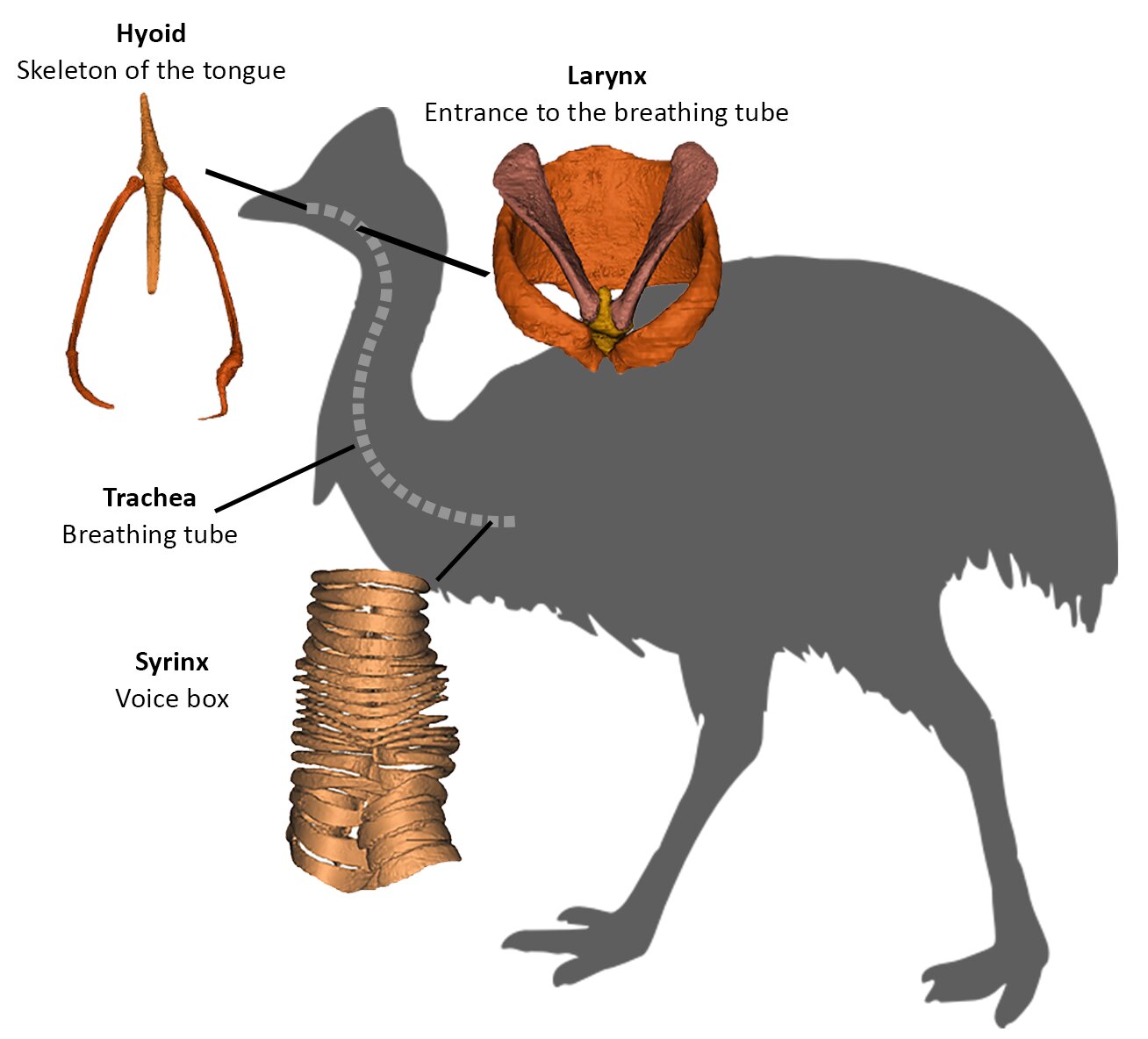
Southern Cassowary Casuarius casuarius Carnivora
The southern cassowary is the largest forest bird in the world, and the second heaviest bird in the world after the ostrich. It is third tallest after the ostrich and emu. Females are bigger and more brightly coloured. Adult Southern Cassowaries are between 1.5 m (5 ft) to 1.8 m (6 ft) tall.

Cassowaries — kidcyber
The southern cassowary is an important rainforest gardener, spreading the seeds of rainforest trees. Sometimes the seeds are so large that no other animal can swallow and disperse them. Quick facts COMMON NAME: Southern cassowary ALSO KNOWN AS: Double-wattled cassowary SCIENTIFIC NAME: Casuarius casuarius johnsonii RECOVERY PLAN:

Cassowary Description, Characteristics and Facts! YouTube
Casuarius casuarius, the southern cassowary, fruit-eater-in-chief of Australia's rain forests. Cassowaries are large, flightless birds related to emus and (more distantly) to ostriches, rheas.
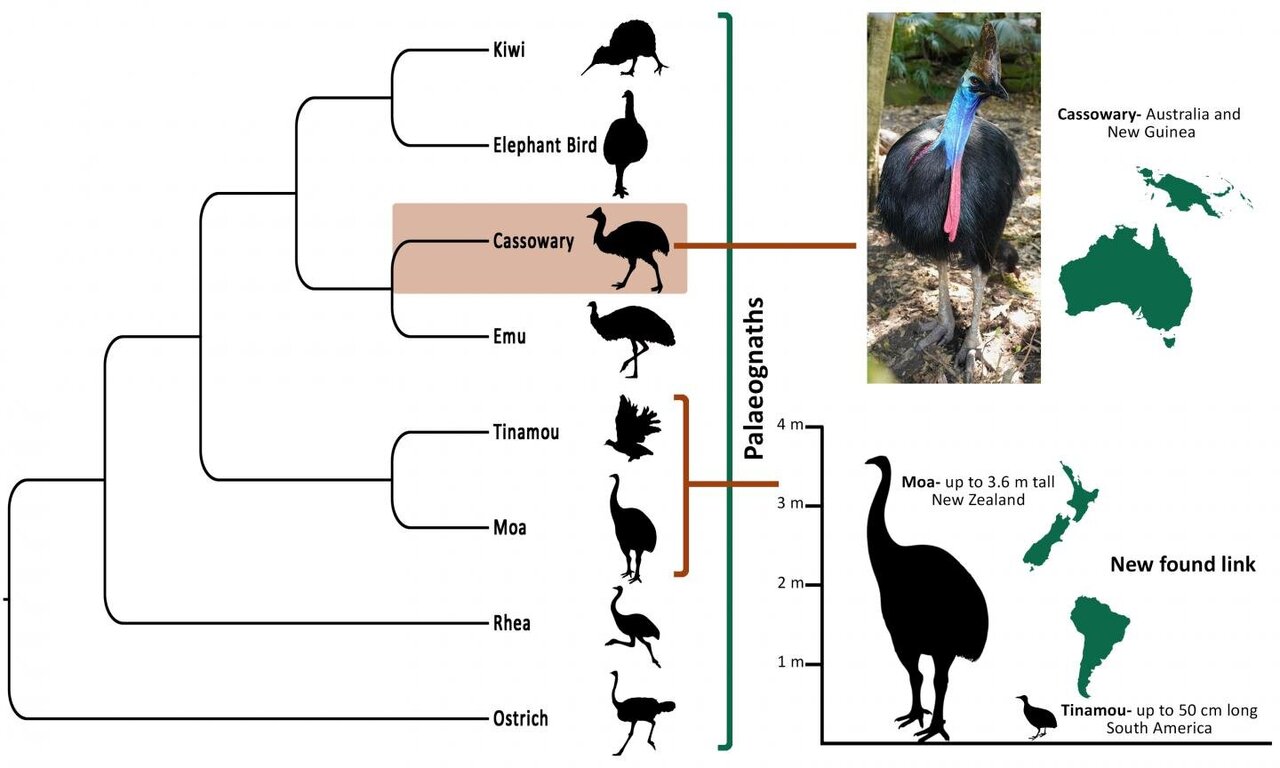
Inside story on cassowary evolution
At the Smithsonian's National Zoo and Conservation Biology Institute, cassowaries are fed a daily assortment of grapes, tomatoes, squash, papaya, bananas, apples, sweet potatoes and carrots. Social Structure Southern cassowaries tend to live alone, only coming together to breed.

cassowaries mating, July 2016 YouTube
Biggs (2013) state 2-15 min Bentrupperbäumer (1997) reports copulation as being short (about 1-2 min) Reproduction Breeding Breeding season Southern and Northern Cassowary Not well known; reported with great variability
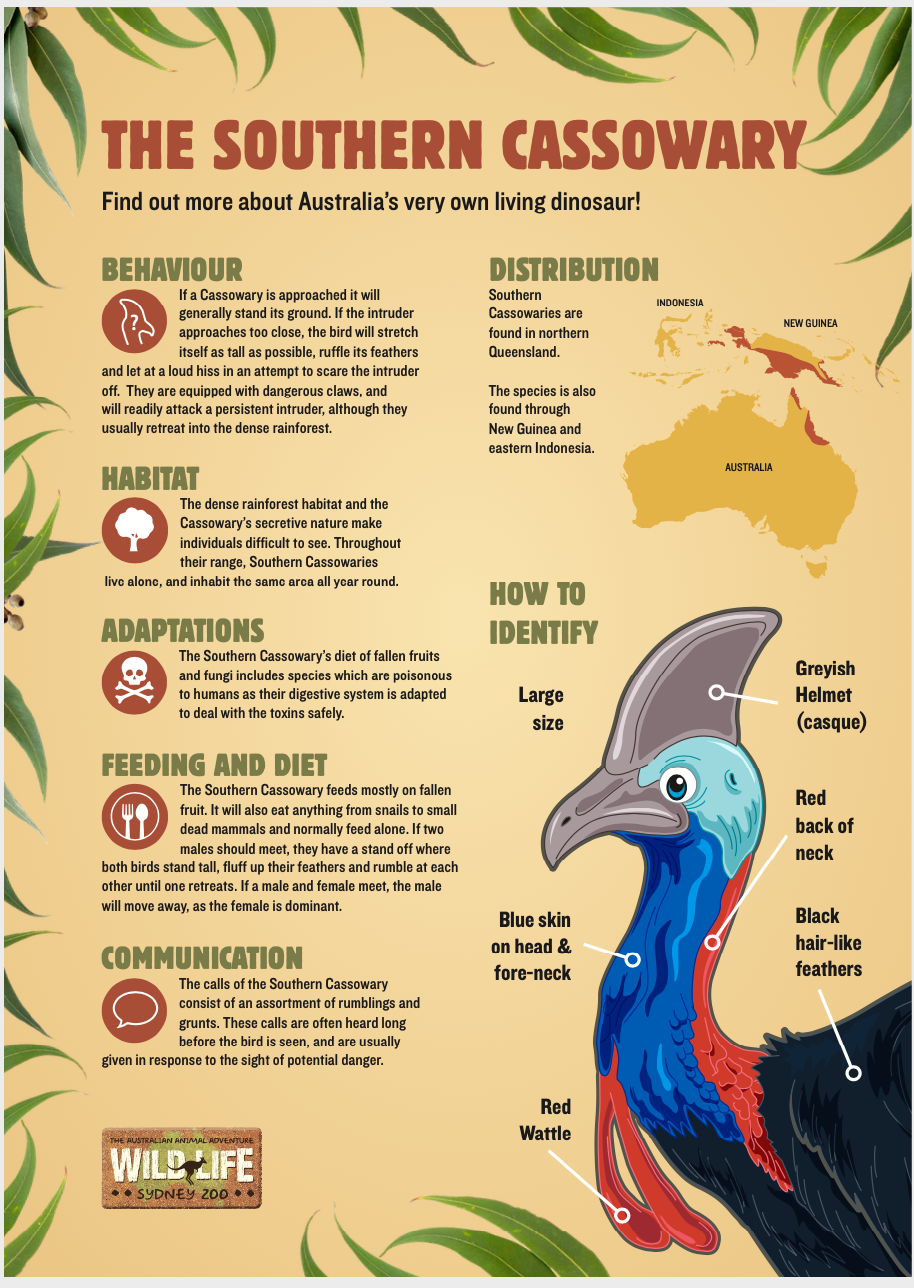
All About The Southern CassowaryMerlin's Education Toolbox
The cassowary is a large, flightless bird with a body size that can reach up to 5.6 feet (1.7 meters) in height and weigh around 129 pounds (58.5 kg). Its most striking feature is its brilliant blue-black skin and feathers, which serve as excellent camouflage in its dark, forested habitat.
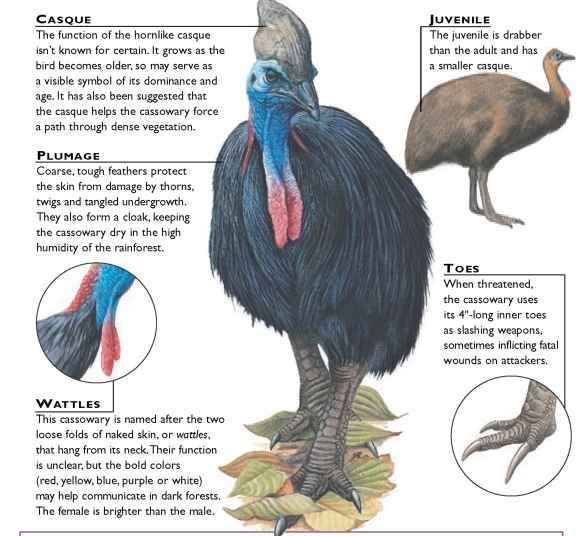
Doublewattled Cassowary (Birds)
Cassowary life cycle display poster expertly summarises the life cycle of the southern cassowary by breaking it down into 4 key stages. Colourful and engaging, each stage of the life cycle is boldly illustrated and simply explained to help your students associate the facts with images to aid their recollection.
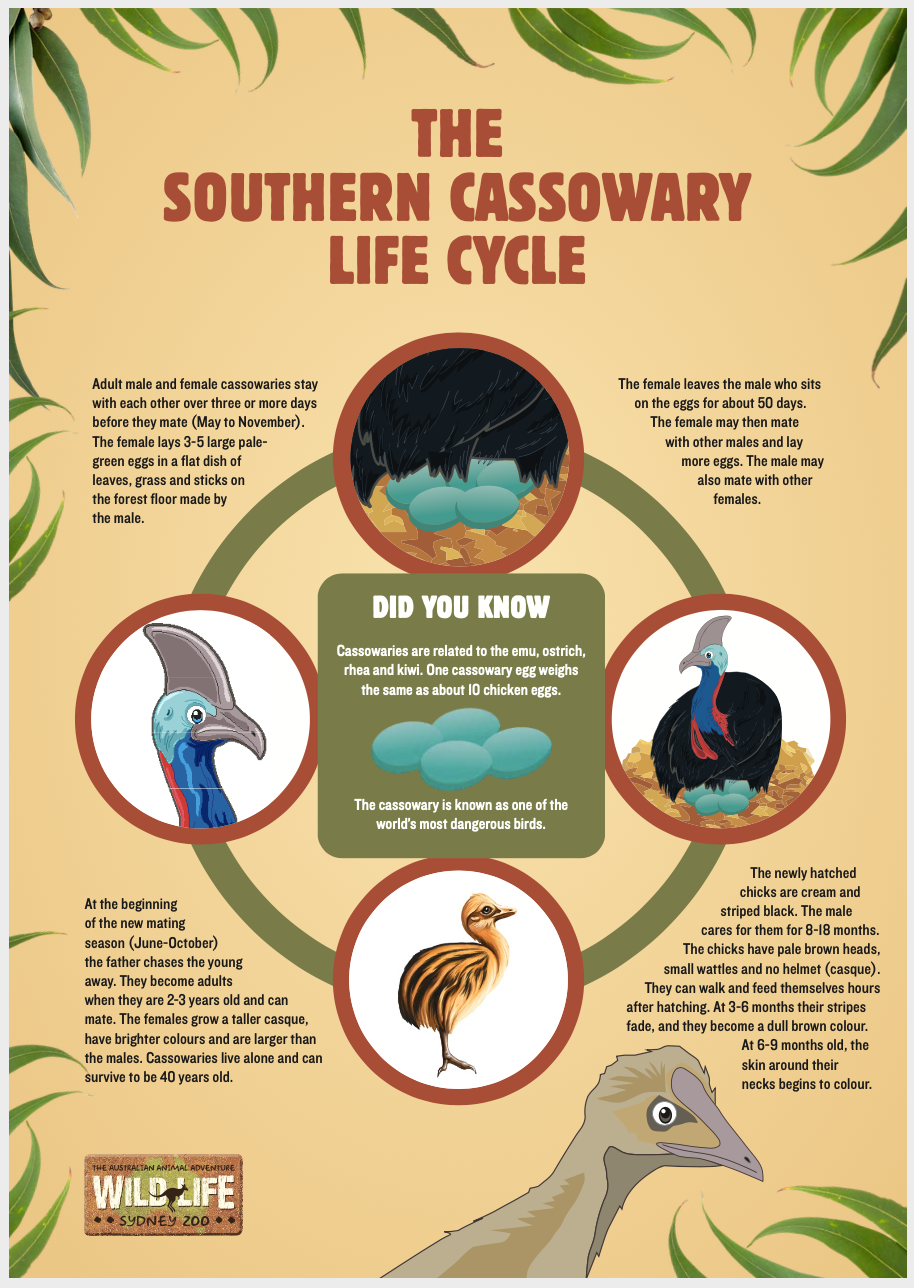
All About The Southern CassowaryMerlin's Education Toolbox
They are adept at disappearing long before a human knows they are there. The southern cassowary of the far north Queensland rain forests is not well studied, and the northern and dwarf cassowaries even less so. Females are larger and more brightly coloured than the males.

Know Your Cassowaries Animals information, Fun facts about animals, Animal facts
Cassowaries. The Cassowary (genus Casuarius) is a very large flightless bird native to the tropical forests of New Guinea and nearby islands, and northeastern Australia. The Southern Cassowary is the third tallest and second heaviest living bird, smaller only than the Ostrich and Emu. Cassowaries feed mainly on fruits, though all species are.

Late Pleistocene/Early Holocene sites in the montane forests of New Guinea yield early record of
The southern cassowary ( Casuarius casuarius ), also known as double-wattled cassowary, Australian cassowary, or two-wattled cassowary, is a large flightless black bird, found in Indonesia, Papua New Guinea, and northeastern Australia. It is one of the three living species of cassowary, alongside the dwarf cassowary and the northern cassowary.
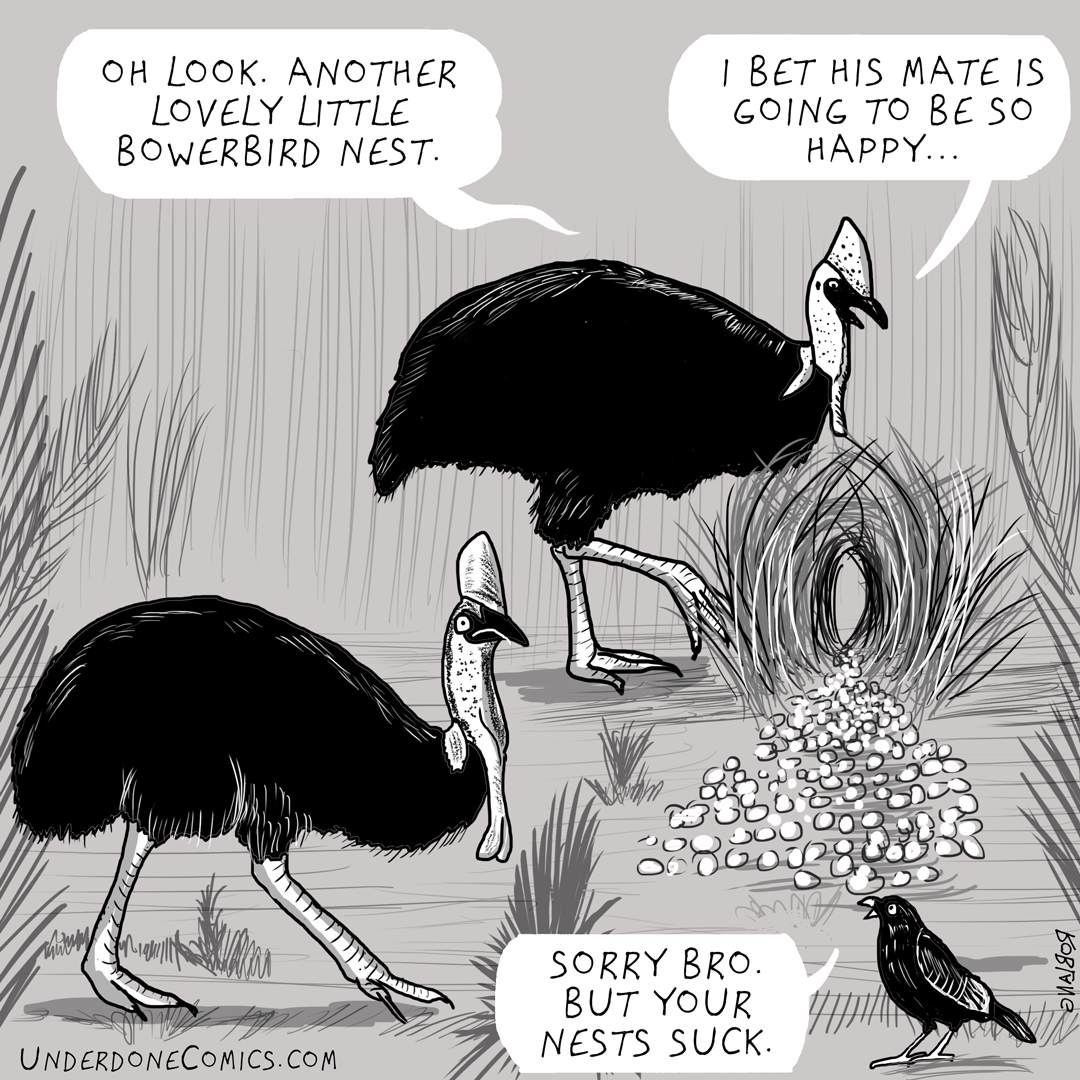
The Life Cycle of a Cassowary
Adult Cassowaries are typically between 1.5-1.8 metres tall and females can weigh up to 70 kilograms. Adult females are larger than males (males rarely exceed 50 kilograms), and males have a slightly drooping tail. Casque One of the Cassowary's most defining features is its casque, the helmet-like structure on its head.
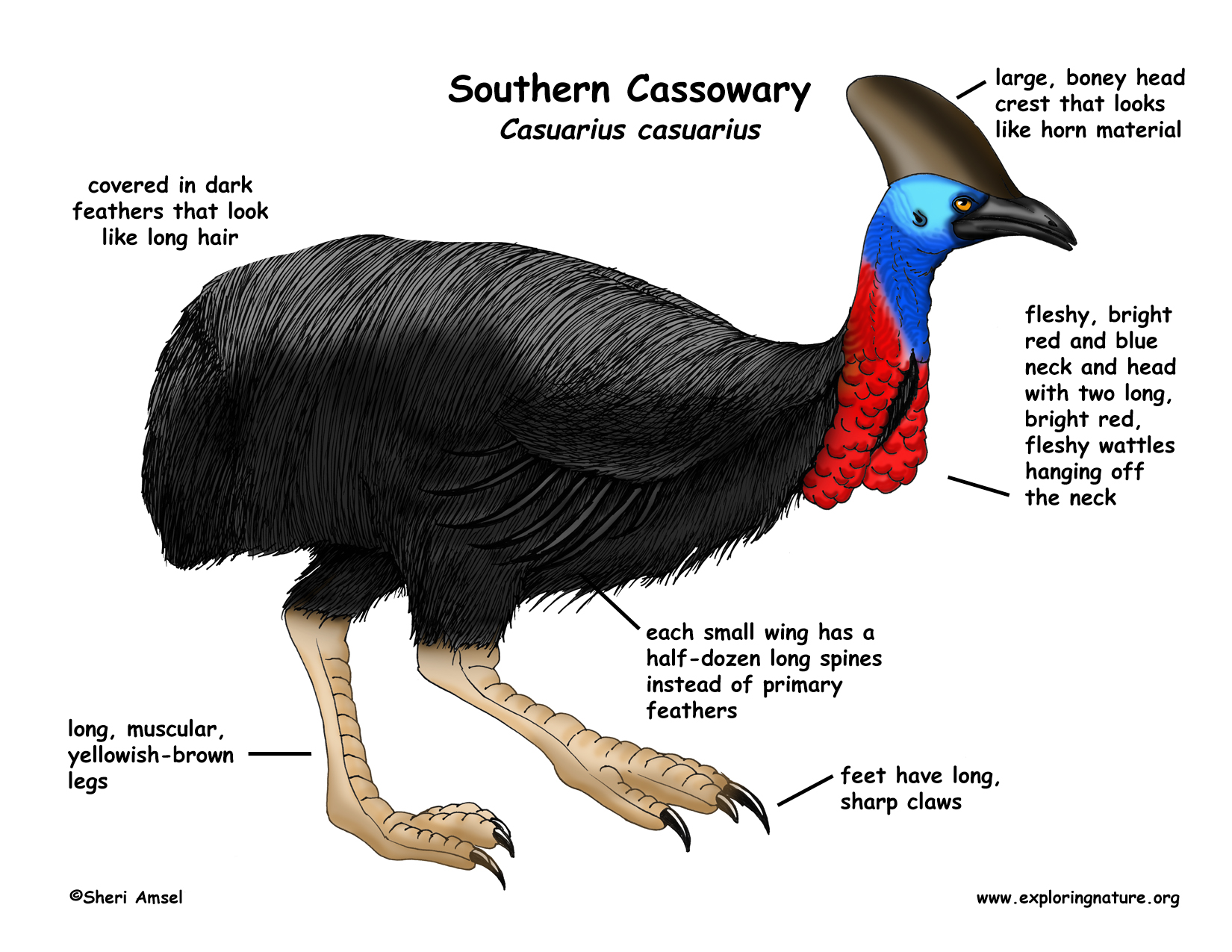
Cassowary (Southern)
The Southern Cassowary is often heard long before the bird is seen, with its rumbling calls usually given in response to the sight of potential danger.

Southern Cassowary Pack
The cassowary, a colourful yet solitary big bird from far north Queensland and Papua New Guinea, has been studied for centuries but now Flinders University researchers have studied the internal.

Tropical Rainforests 1
Cassowaries live alone and can survive to be 40 years old. DID YOU KNOW Cassowaries are related to the emu, ostrich, rhea and kiwi. One cassowary egg weighs the same as about 10 chicken eggs. world's most dangerous birds. The female leaves the male on the eggs for about 50 days. The female may then mate with other males and lay more eggs.

A day to celebrate the incredible cassowary Chester Zoo
Evolution The Evolution of Cassowaries - Where did they come from? For many people, the evolution of the cassowary is perplexing. The Southern Cassowary's three-toed feet, amber eyes, casque, and brightly-coloured neck are evocative of a dinosaur. Southern Cassowaries belong to the taxonomic order Struthioniformes, commonly known as 'ratites'.
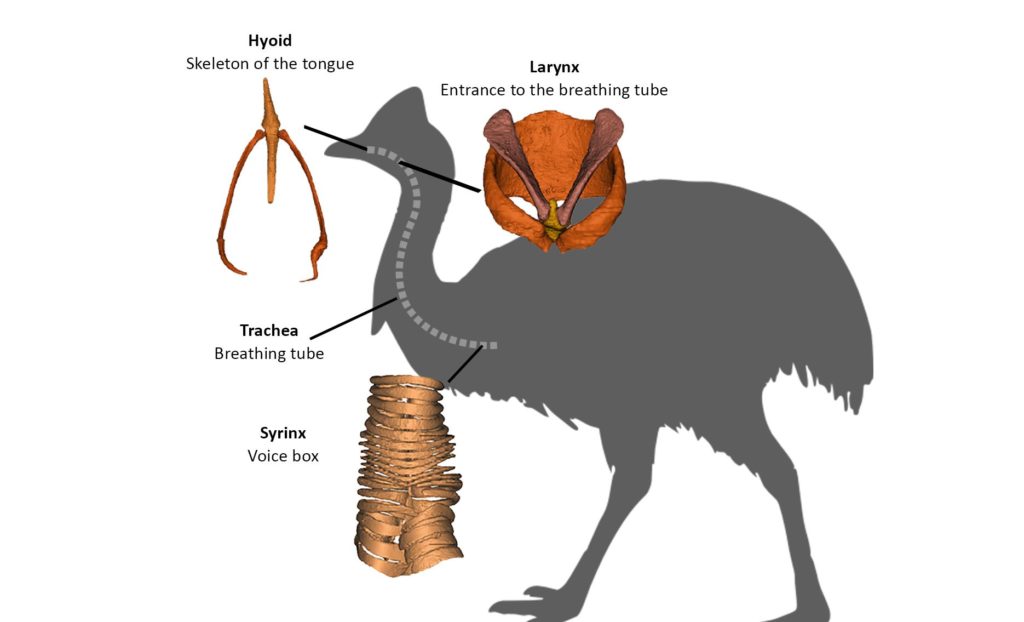
Inside view of evolutionary flight path News
Life Cycle The male cassowary raises the chicks ©iStock Images Breeding takes place May to November. After mating, a female lays 3-6 eggs, then leaves the male to sit on them for about 8 weeks until they hatch.